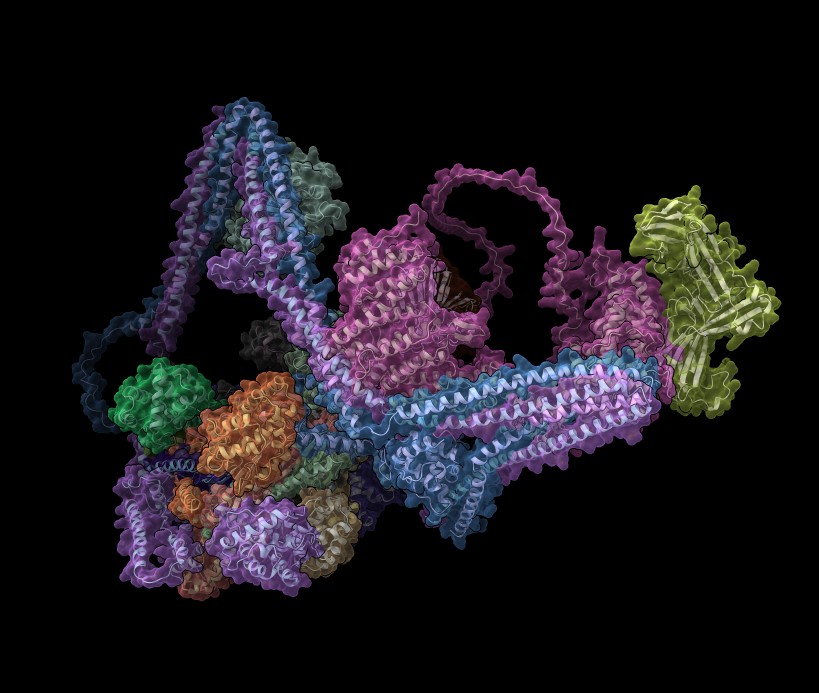News release
From:
University of Queensland researchers have used artificial intelligence to build a 3D map of key cell components to better understand dementia and infectious diseases including COVID-19.
Professor Brett Collins from UQ’s Institute for Molecular Bioscience and Professor Pete Cullen from the University of Bristol led a team that modelled the 16 subunit Commander complex, a bundle of proteins that act as ‘postal workers’ in cells.
“Just as the postal system has processes to transport and sort cargo, cells in our bodies have molecular machines that transport and sort proteins,” Professor Collins said.
“Cargo transport is all about getting the right parcels to the right destination at the right time and in cells, the Commander complex controls this system to ensure the right amount of protein is delivered to the right place.”
This protein transport system is implicated in many diseases including heart disease, Alzheimer’s disease and infections.
“Knowing the 3D shape of these proteins helps us understand how they function, why mutations cause disease, and how to design drugs to target them in the future,” Professor Collins said.
“Viruses such as SARS-CoV-2 – which causes COVID-19 – and human papilloma virus (HPV) which can lead to cancer need the Commander complex to infect cells and it has been linked to the transport of the amyloid protein in Alzheimer’s disease.
“Mutations in the Commander complex disrupt the transport of lipids into cells, causing high cholesterol and heart defects in people with the rare Ritscher-Schinzel syndrome which is characterised by intellectual disability and development delay.
“Knowing the structure of the Commander complex means we can better understand how this happens and advance our understanding of how it is involved in disease.”
The international team used state-of-the-art electron microscopy and machine learning methods to decipher the structure of the entire Commander protein complex.
Professor Cullen said mapping the complete structure of the Commander complex would not have been possible even 2 years ago without these new technologies.
The team also included Dr Michael Healy from IMB, Dr Kerrie McNally from the University of Cambridge and Rebeka Butkovic and Molly Chilton from the University of Bristol.
This research was funded by organisations including the National Health and Medical Research Council (Australia), Medical Research Council (UK) and the Wellcome Trust.
The research is published in Cell.



 Australia; International; QLD
Australia; International; QLD



